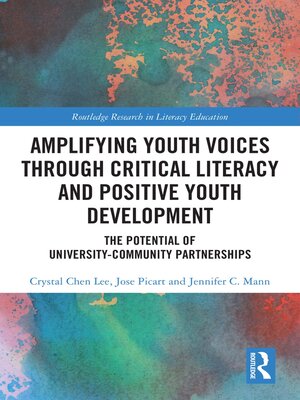Amplifying Youth Voices through Critical Literacy and Positive Youth Development
ebook ∣ The Potential of University-Community Partnerships · Routledge Research in Literacy Education
By Crystal Chen Lee

Sign up to save your library
With an OverDrive account, you can save your favorite libraries for at-a-glance information about availability. Find out more about OverDrive accounts.
Find this title in Libby, the library reading app by OverDrive.



Search for a digital library with this title
Title found at these libraries:
| Library Name | Distance |
|---|---|
| Loading... |
This book explores the transformative power of critical literacy in fostering youth engagement through university-community partnerships. It is based on a six-year study by The Literacy and Community Initiative (LCI) at North Carolina State University.
This book examines the potential, possibilities, and challenges of using critical literacy in university-community partnerships to amplify youth voices. Through the LCI program, youth in four community-based organizations completed a critical literacy curriculum, published their writings in a book, and participated in public readings to engage and lead their communities. The authors draw on data from semi-structured individual interviews, focus groups, youth narratives, and socio-emotional surveys across four unique youth populations. The youth populations involved collaborations with youth of color in urban communities, Latine immigrant and second-generation youth, girls in foster care and high-risk situations, and youth from immigrant and refugee backgrounds. Results of the study suggest that after engaging in the LCI critical literacy program, youth demonstrated improved literacy skills, enhanced social-emotional well-being, and increased community leadership and self-advocacy. Presenting a novel theoretical framework for the effective use of critical literacy to promote positive youth development in conjunction with first-hand insights into the successful development and sustainment of university-community research partnerships, this book ultimately provides a unique insight into how critical literacy and successful university-community partnerships can combine to result in powerful support for underserved culturally and linguistically diverse youth.
This book will appeal to scholars, educators, and practitioners with interests in critical literacy, positive youth development studies, and adolescent research.







